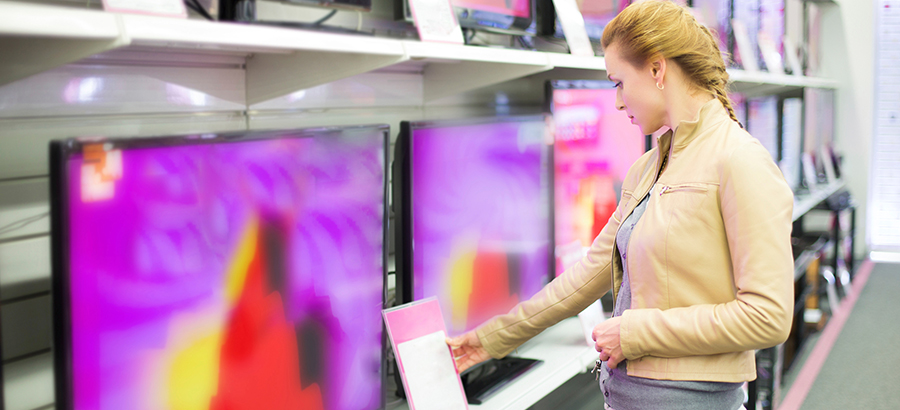The consumer electronics and semi-conductor companies are in an industry with a high level of product returns and recalls – 15% of all recalls in the EU in Q1 2019, and 29% in the US . Sometimes the returns are not due to a fault. According to a 2011 report by Accenture, Reducing the Quantity and Cost of Product Returns in Customer Electronics, more than half of all electronics returns were classified as No Fault Found (NFF). NFF means that, when returned products arrive at a repair facility and are tested, nothing is found to be wrong with them.
If a consumer electronics product fails or doesn’t meet a customer’s needs, a replacement is often covered by a warranty or product recall. That is an expense to the electronics supplier. These costs include receiving, assessing, repairing, reboxing, restocking and reselling returned products.
For manufacturers and distributors of consumer electronics faced with this situation, a system for managing traceability, returns and recalls is a requirement, not a nice-to-have.
What is traceability?
Traceability is the capability to verify the history, location or status of an item. This is done by serialization, lot tracking, and other unique identifiers to allow for complete, end-to-end visibility across the supply chain. What products need is similar to the concept of provenance of historical objects – the chronology of the ownership, authenticity, custody, integrity and location of an object.
With traceability, a business can analyze and assess the efficiency of the supply chain from source, through production, up to the point of sale, and identify the components and the locations associated with their movement. Companies can share the data and make it more powerful by connecting to other systems in the supply chain.
For recalls, the ability to speedily locate specific lots of finished goods for a defective part is a key requirement.
For compliance – whether government or customer-driven – the capability to ensure part traceability from material origins through manufacture to final destination is integral to guaranteeing products against defective materials and workmanship.
Issues in the electronics industry
Electronics manufacturers are facing constant pressure to introduce innovative new products that are durable, cost-effective and which fill a market gap. The pace is fast, design and production times are short, and so is time to market. Typical business issues they face are:
- Continuous product innovation
- Short product life cycles
- High levels of obsolete inventory
- Complex supply chains
So manufacturers have to manage a large number of components, from a range of suppliers, delivered through a variety of channels, to possibly thousands of sales outlets. Electronics manufacturers, therefore, need reliable systems that enable data management and cross-communication throughout the supply chain.
What traceability should do
The traceability system needs to be able to answer common questions:
- Was the product assembled with a defective component?
- Was the product assembled with a compliant process?
- Is the whole manufactured order affected, or is it limited to a specific component, batch or lot?
- What is the overall production history of the item?
Effective traceability is implemented by tying together a number of different components:
- A warehouse management system with functionality to track serial numbers, lots and bin locations to provide better visibility and management of serialized stock items in specific warehouses.
- Inventory management that records traceability and quality data of materials and products through the supply chain.
- A manufacturing operations management system that allows you to measure and improve product quality.
- A customer complaints capability for capturing, managing and resolving customer issues, including the review and escalation of product defects to enable recalls and prevent future problems.
- Product recall and mock recall capability that enables compliance for industries that need to manage the recall process as well as testing the system through mock recalls.
Processes of traceability
For anyone involved in managing traceability across the manufacturing and supply chain, the solution should enable traceability across the following areas.
Suppliers and their products that enter your organization
When a product recall or return event occurs, the first requirement is an efficient method to make sure items are returned to or repaired by a supplier. This event is triggered when a quality issue is logged due to a problem with raw materials or finished goods, or through a customer complaint. There needs to be a link back to the purchase order that was originally placed to provide full control and traceability of the product history. Finally, inventory also has to be kept up to date by recording that the returned goods are quarantined until the supplier agrees to accept them, and once items are returned the stock is removed.
Components, products and processes within the organization
With a traceability system, manufacturers have the benefits of verifying the location, history and application of items moving through their production process. The information from the system can also be used to swiftly trace and quarantine defective stock.
Delivered products to customers
Having an accurate record of customer interactions with products is essential in this era of heightened customer expectations to track complaints. This information is also important for traceability as the customer complaint information can be analyzed to improve the supply and manufacturing process.
Benefits of a traceability system
Managing returns is a challenge for electronics manufacturers. They need to be able to quickly diagnose and correct a customer’s problem with a product because returns are costly for the vendor and inconvenient for the customer. Then they need to ensure that the returned goods do not become lost on the factory floor.
With a system that manages traceability, returns and recalls, electronics manufacturers and distributors should be able to react in minutes or hours, instead of days or week. They can quickly get the information needed on work order numbers, batch numbers, and purchase order numbers for multiple products and several different parts.
Other benefits include:
- Real-time tracking of supplier performance, quality and warranty metrics
- The identification of the source of defects and quality issues
- The recording of traceability and quality data on materials and products from purchasing through inspection, manufacturing, stocking and sales
The data that traceability provides can help the operations teams to find and fix production problems. The data gained from traceability can also drive process and product improvement over time.
Selecting a traceability solution
There are specific traceability systems available, but an integrated traceability functionality as part of an ERP solution allows a company to easily make reporting data available as well as having a single source of all critical business information.
For mid-size manufacturers and distributors, selecting a vendor who fits in your space and understands your requirements is important. The last thing a company wants to be is a small fish in a large Tier 1 ERP pond.
The importance of traceability
Complete and accurate traceability is no longer optional in electronics manufacturing. The nature of this ever-changing, fast-paced environment requires a traceability solution that helps manufacturers better manage the production environment by making detailed material, product and process information readily available.
A proven traceability solution will equip manufacturers with detailed reporting of the complete production process – who touched the product and when it was in process, what operations and equipment it went through and how that process transpired, what materials were used and where they came from. In addition, the ability to test the system with mock recalls helps to accelerate the time to completion of a recall, improve governance and quality systems, ensure compliance and meet regulatory reporting requirements. Anything less isn’t a complete traceability solution.






